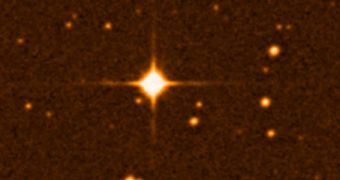A group of investigators with the Meteorological Dynamics Laboratory at the Pierre Simon Laplace Institute in Paris is currently working on developing an ambitious new model to account for the evolution and behavior of atmospheres around Earth-like extrasolar planets. This work will have major implications on how astronomers view Earth analogs in their search for habitable worlds.
The team is led by senior research scientist Francois Forget. He says that modern-day telescopes are better than their predecessors at collecting data on the small points of light that represent even the largest exoplanets. However, this line of study is just in its infancy at this point, and more assets are needed to create the type of databases required for statistically-relevant analyses.
Some of the questions the new model seeks to answer refer to the nature of alien atmosphere. Scientists want to know if rain falls or hovers above ground, if the atmosphere is getting thicker or is being dispersed into space, if sunlight ever reaches the actual surface of the planet, and other such things.
They are all very relevant questions, if humankind is to seriously consider a mission to one of these worlds. Our search for Earth-analogs to colonize may have not begun just yet, but it soon will, and it is entirely possible that models such as this one will have paved the way for such efforts.
Alien atmospheres are usually observed with existing technologies solely when they pass in front of their parent stars. These events allows astronomers to measure the chemical makeup of air around these planets, but Forget's model is meant to enable wider-scale analyses of multiple Earth-like planets without direct observations.
One of the main challenges facing this effort is that the observational resolution of existing telescopes does not really enable astronomers to look at the atmospheres surrounding Earth analogs. Thus far, only the atmospheres of hot Jupiter-class exoplanets have been visible from our vantage point, Astrobiology Magazine reports.
The new model is “very ambitious. It’s designed in a way so we can simulate, as much as we can, a planet with any kind of atmosphere around any kind of star, and with this tool explore the range of planets we can have,” Forget explains. A paper showcasing the team's plans appears in a recent print issue of the journal Proceedings of the Royal Society, and is available on the arXiv server.
“This is very highly speculative brainstorming on what kind of cocktail of atmosphere we can have on a terrestrial planet. We don’t know quantitatively where we should put the boundaries between the various types of atmospheres,” the expert says.
“Also, keep in mind the physical processes that actually control the composition of the atmosphere are extremely difficult to model and simulate and calculate,” Forget concludes.

 14 DAY TRIAL //
14 DAY TRIAL //